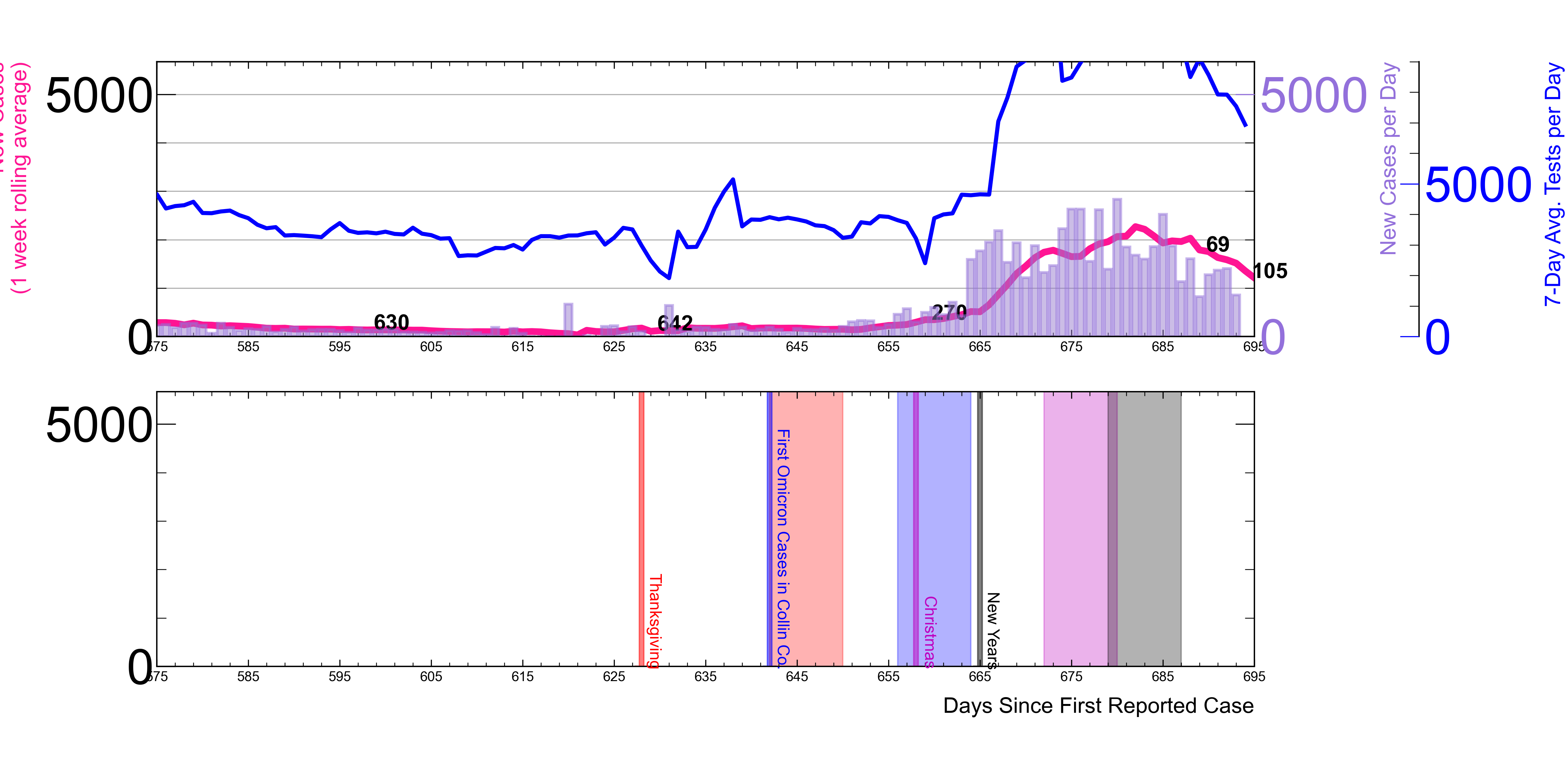We crossed a horrific milestone this weekend: at least 200,000 Americans are now dead due to COVID-19, the disease caused by the SARS-CoV-2 virus. We crossed the 100,000 mark around May 27, approximately 4-5 months after the virus first landed on U.S. soil. [1] Now, 4 months after that grim milestone, we have doubled it. Well, we’ve more doubled it; in reality, excess deaths this year far exceed 200,000, which implies that the number dead due to COVID-19 is only bounded from below by the number 200,000.
That’s our national milestone. How are things looking where I live, in North Texas? It’s complicated.
In Collin County, where I live, the dashboard reporting public health data on COVID-19 has, since about August 20, expressed no confidence in the data being provided by the State. The State took over case reporting months ago in a badly managed transition that left our county in the dark for day on end just at the pandemic was getting rapidly worse in Texas. Things stabilized … until August 20, when the county felt compelled to write, in a big red box with white lettering, that they had no confidence in the data provided by the state.
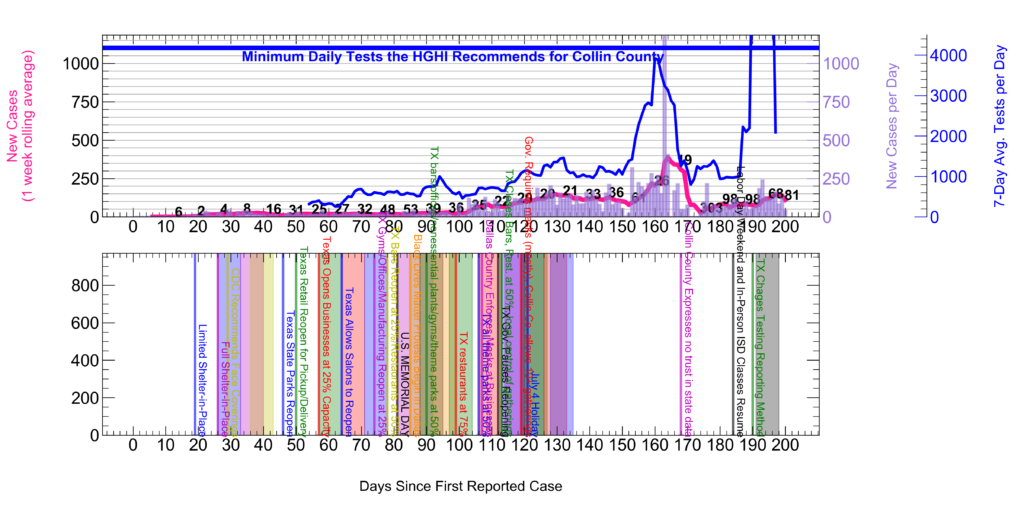
Things were looking good until August 20, which happened around day 170, when reported tests were collapsing after a steady rise and when, as a consequence, reported new cases collapsed as well. Throughout this period, the ratio of positive tests to total tests has remained somewhere between 5-10%. It’s definitely appearing to improve over time … if the state’s numbers are to be believed in the first place.
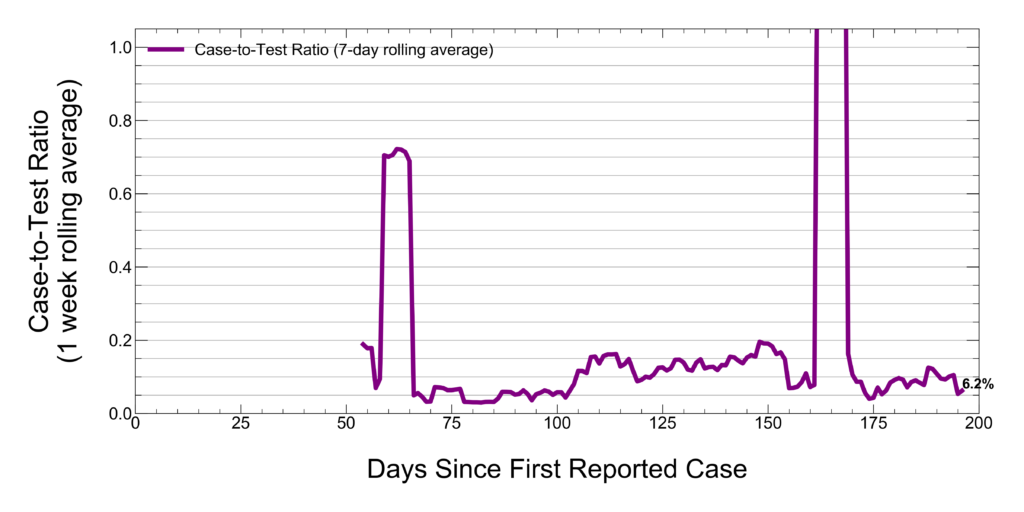
Collin County is about the same size, urban content, and demographics as our neighboring county, Denton County. What’s been going on there, where they never expressed the kind of doubt in state data reported by Collin? According to reporting by the Dallas Morning News [2], Denton has leveled off at about 70 new cases per day, while Collin has leveled at 100 new cases per day. We’ve danced around each other, but basically both counties have seen the same general trends around the same time. Frustratingly, both had been seeing some level of decline until around the time public and private K-12 schools went back into session. As more schools have returned to in-person instruction over time, the cases have been creeping.
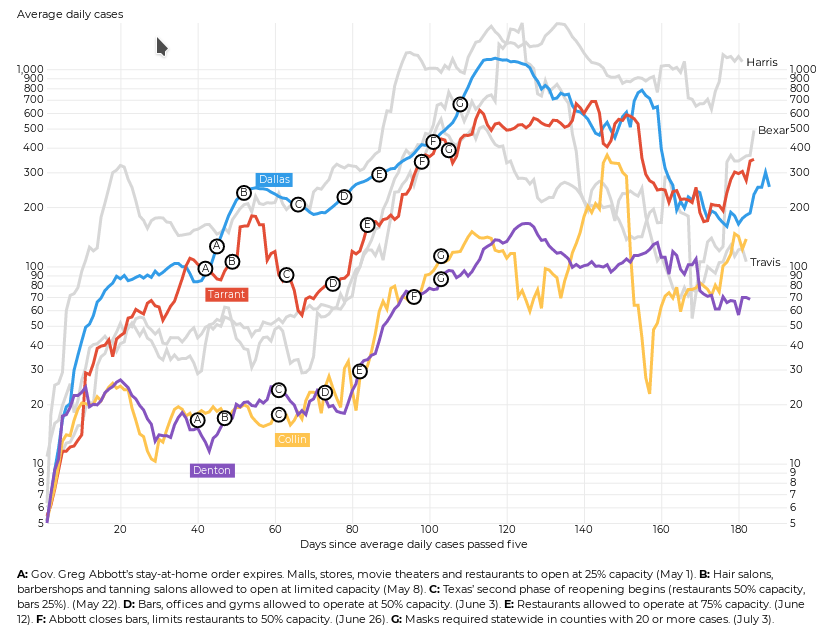
Dallas County, the most populous in the region, has similarly seen a climb, as has Tarrant County (home to Fort Worth). In general, the trends in North Texas are up in cases.
In Collin County, the two-week-shifted ratio of deaths (now) to cases (2 weeks ago) is 1.1%. That’s heartening overall, but one has to remember that the seasonal flu has a death rate about 5 times smaller than that – COVID-19 is still 5 times more deadly than your typical influenza, so this is nothing to write off.
200,000 dead tells the rest of the story, of course. The worst influenza in the most recent decade only killed 61,000 Americans in a 1 year period. We’re not 1 year into COVID-19, and 200,000 are dead already.
What about SMU, where I work? Things didn’t look great there for a time. After students arrived on August 17 and after classes began a week later, we saw a rapid influx of cases in students living both on- and off-campus. By early September, the doubling rate was barely a week, and it seemed like we were lurching toward a serious problem. In the last week, after leveling off for two weeks at about 25 new cases reported per day, we’ve begun to see a decline in reported new cases. Whether this is due to measures and practices, or students increasingly seeking tests off-campus to avoid triggering on-campus tracing and isolation, is unclear to me. Mercifully, only a small fraction of employees have become ill.
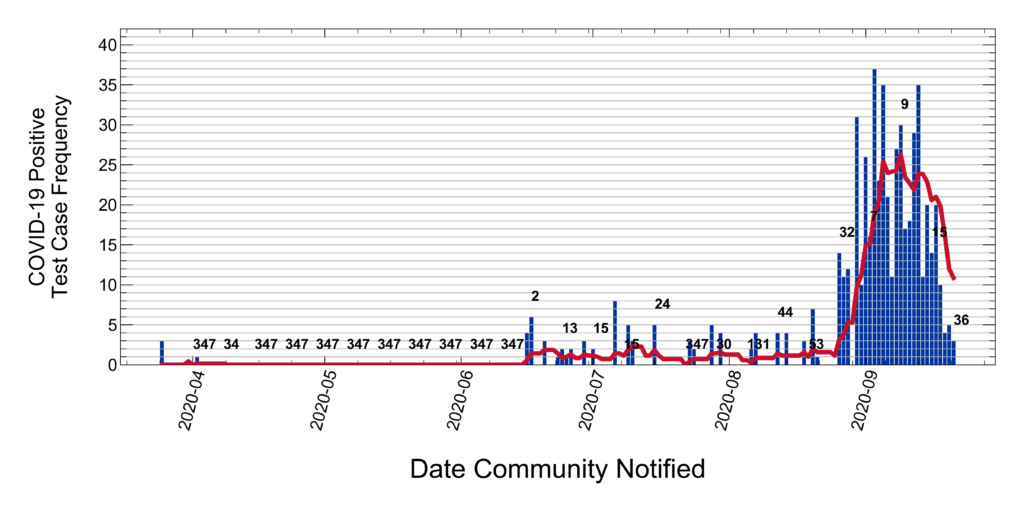
That said, I would estimate that something like 10% of undergraduates who returned to SMU this fall (living either on- or off-campus) have tested positive for COVID-19. That’s an imperfect estimate, since SMU doesn’t publish data about how many undergraduates are on- or off-campus in housing, but is certainly far from 1%, still climbing (if more slowly), and is extremely far from what would be needed to trigger local herd immunity in the undergraduate population.
And so, here we are. Some good news. More troubling news. 200,000 Americans dead … at the very least.
I am crushed.

